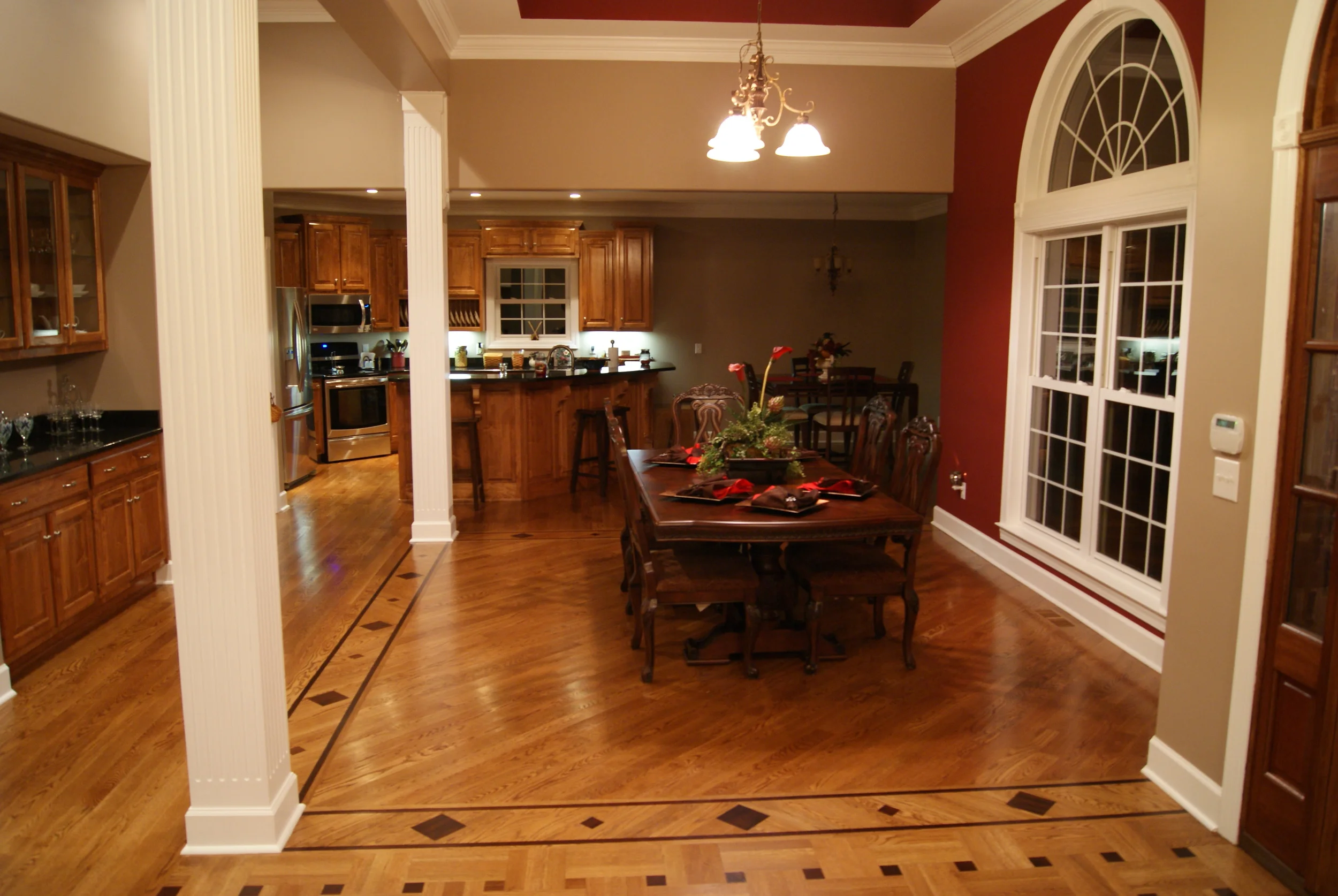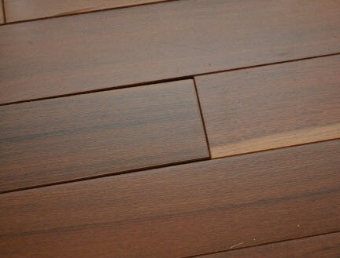How to Prevent Wood Floor Gaps in Winter
Moisture Issues
The other approach to winter gapping is to address the moisture issues. Gapping and associated noises usually occur when the flooring dries significantly from its summertime high moisture levels. So, to reduce winter gapping, reduce the annual range of moisture levels. Or, more specifically, to reduce winter gapping, don't let the indoor RH drop too much. (Or don't let summer RH levels get too high—but that is another article.) A good annual range for the best flooring performance is a swing of 20 percent RH from wettest to driest. This means that in the Southeast, we may work in a range of 40 to 60 percent RH, while up north they may use 30 to 50 percent, and out west they may use 20 to 40 percent. All will work, as long as the RH range isn't too wide. But sometimes in the winter, the RH tends to dip too low.
There are two approaches to keeping winter indoor RH elevated.
Moisture Option 1: Reduce Ventilation
Because of the relationship between temperature, moisture and RH, ventilation of a house in the winter tends to dry it out. When you bring cold outside winter air into a house and warm it up, the RH of that air drops significantly. For example, air at 30 degrees Fahrenheit and 50 percent RH when warmed to 70 degrees will be at 10 percent RH. To get the RH of this air back up to something respectable, we would need to add moisture. The more ventilation that is occurring, the more this dry air is drying out your customer's house, and the more moisture she needs to add. The solution to this part of winter drying is to reduce ventilation.
Ventilation of a house is measured in air changes per hour (ACH). As an example, a house that is 1,800 square feet with 8-foot ceilings has a volume of 14,400 cubic feet (1,800 x 8 = 14,400). Changing all the air in this house with fresh air once an hour would be one ACH.
Current building codes and standards recommend home ventilation rates near 1/3 ACH. Not all states enforce these codes or standards. Average homes have ventilation rates near 1 to 2 ACH, while some old, leaky homes are near 7 to 10 ACH. Weatherization and home energy audits typically measure ventilation rates. These programs can also pinpoint leakage sites and direct sealing efforts to reduce excessive ventilation rates. Old windows are often major leakage sites, as are recessed lights and other holes in ceilings and floors.
Moisture Option 2: Add Moisture
As I mentioned above, bringing in 30-degree air at 50 percent RH, then warming it to 70 degrees causes its RH to drop to 10 percent. To raise the RH, we need to add moisture. The American Society of Heating, Refrigerating and Air-Conditioning Engineers (ASHRAE) publishes charts showing moisture and air relationships. Using these charts with our example house from above, we need to add about 3.3 pints of water per hour to raise the inside RH to 30 percent. If the ventilation rate is higher, we need to add more water. If it's colder or warmer outside, the amount of water needed changes. This same house, if located in Duluth, Minn., would need almost 5 pints per hour during common winter conditions. If we want the RH to be even higher, we need to add more moisture. Table 1 shows some examples.
As you can see from Table 1, colder outside air requires more moisture. Higher ventilation rates require more moisture, and higher target indoor RH levels require more moisture. Since the ventilation rate and moisture needed are related, an economical approach is to reduce ventilation rates, then add moisture.
Moisture is added to indoor environments from normal household activities and use. When this moisture is not sufficient to meet the needs, a humidifier can be added. Table 2 shows some typical indoor moisture sources and amounts.
According to Table 2, a family of four contributes about ¾ pint of moisture per hour. This number is likely smaller than that shown, because people aren't home all day and don't clean every day. So I would suggest ignoring household sources when determining moisture needs.
Adding moisture then boils down to using humidifiers. Humidifiers can either be stand-alone or attached to a central forced air furnace. Typical residential systems can provide up to about 6 pints per hour. This is an important number: 6 pints per hour, maximum. Table 1 shows that more than 6 pints per hour are necessary to get to 40 percent RH when it is real cold outside in a relatively tight, 1,800-square-foot house. We can't even get to 30 percent RH in a somewhat leaky house when it's moderately cold outside, or in a larger, moderately tight house. (By moderately cold, I mean the kind of weather we have in Kentucky. By real cold, I mean the type of weather in Minnesota or New Hampshire.)
To make matters worse, moisture output from some humidifiers depends on furnace air temperature. According to Aprilaire, a large manufacturer of whole-house humidifiers, their humidifiers produce a maximum of about 3.6 pints per hour when connected to a heat pump. With that number, we can't even get to 30 percent RH in a moderately tight, moderately sized house in a moderate climate.
Adding Too Much Moisture
Let's say we can get the humidity up in the winter. Now we need to worry about hurting the building and causing condensation or, even worse, mold. Condensation typically forms first on windows. Condensation will form on a typical double-pane window at a RH above 40 percent when the outdoor temperature is zero degrees or below. For single-pane windows, condensation can occur at a RH above 30 percent when outdoor temperatures are below about 30 degrees.
Honeywell, another large manufacturer of humidifiers, recommends an indoor RH no higher than 35 percent when it is 20 degrees outside, 30 percent at 10 degrees, 25 percent at 0 degrees, 20 percent at -10 degrees and 15 percent at -20 degrees. According to Consumer Reports, when the outside temperature drops below 20 degrees, even 30 percent RH may be too high. What all this means is that if we add too much moisture to a house, we can cause condensation and possibly mold on windows. In some cases, walls can rot.





